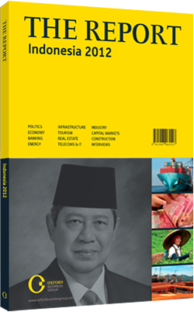Back on track: Rail infrastructure is set for a dramatic overhaul
As part of its new drive to address the country’s historic transport problems, the government is turning its attention to Indonesia’s rail network. The rail system is currently far shorter and more fragmented than its neighbours, with one Trans-Java network and three self-contained lines in Sumatra. Moreover, of the roughly 6900 km of narrow-gauge (1067 mm) lines, only around 4800 km is operational.
PRIVATE SECTOR INVOLVEMENT: The 2007 Railway Law was amended twice in 2009, ending the rail monopoly of state-owned operator Kereta Api Indonesia (KAI) and establishing a working group on a new rail master plan. Subsidised to the tune of $59.4m by the Ministry of State-Owned Enterprises in 2010, KAI finds itself increasingly needing to adopt a commercial approach to what has traditionally been seen as its public service obligation.
Although private concessions for passenger lines have yet to be tested, KAI has established a joint venture to develop the Jakarta airport shuttle infrastructure in conjunction with the private sector. “We have to encourage companies to utilise the railroad in order to reduce congestion on the roads. However, as fuel subsidies are not provided for us, but are provided for the trucking industry, it is very hard to compete on price,” Ignasius Jonan, the president director of KAI, told OBG. The operator has also started restructuring its routes, closing loss-makers such as business trains from Bandung to Jakarta and opening others with higher potential, such as the Bandung-Malang and Surakarta-Madiun links.
HIGH SPEED: High-speed rail also plays a key part in the state’s connectivity plans. The Ministry of Transport is pushing ahead with a planned Trans-Java high-speed rail system that will link Jakarta to the country’s second-largest city, Surabaya, 685 km to the east. Beyond Java, KAI is also planning the Bali Ring Railway, a $2bn project funded by the government that will cover some 565 km running north to south along the coast when it comes on-line in 2016.
In more remote islands, rail development is likely to be linked to mining projects. Significant investments, particularly in coal, should continue to drive private interest in freight networks of ports and associated railways. In 2010 mining-related investors have planned projects worth billions of dollars to be executed over the next five years.
Furthermore, in January 2011 India’s Adani Enterprises signed a $1.6bn deal with the Indonesian government, through its coal mining interest Bukit Asam, for a 250-km railway line and associated port infrastructure capable of handling 60m tonnes a year from the Tanjung Enim coal mine to Tanjung Carat in Kalimantan. In addition, the government is eager to develop the first railway through central Kalimantan, a key mining region on the island of Borneo.
PARTNERSHIPS: Plans for the regional railway have been split into four main sections (seven projects in total) for an aggregate 1829 km of track. These are being offered to the private sector in a public-private partnership (PPP) tender for 30 years sometime in 2011. Cost estimates run to $2.2bn for the whole project. Several foreign groups have shown interest in the first phase of the project, including China’s Harbour Engineering and the Russian government.
ONWARD TRAVEL: The government is tendering phase one of the Trans-Kalimantan railway to the private sector in 2011. The 185-km railway project from Puruk Cahu to Bangkuang will cater to central Kalimantan’s coal industry. Construction on the $2.2bn project, which will also include port facilities for onward travel on barges on the Barito River, is widely expected to start in early 2012, with construction set to last just under two years. Elsewhere on Borneo, some $5.2bn of investment has been approved, covering a coal smelter and power station linked to its 5000-ha coal mine. With the UAE’s MEC Holdings having already secured $1bn in funding for its 130-km rail project in East Kalimantan, the days of Indonesia’s rail shortcomings are set to come to an end.
You have reached the limit of premium articles you can view for free.
Choose from the options below to purchase print or digital editions of our Reports. You can also purchase a website subscription giving you unlimited access to all of our Reports online for 12 months.
If you have already purchased this Report or have a website subscription, please login to continue.

